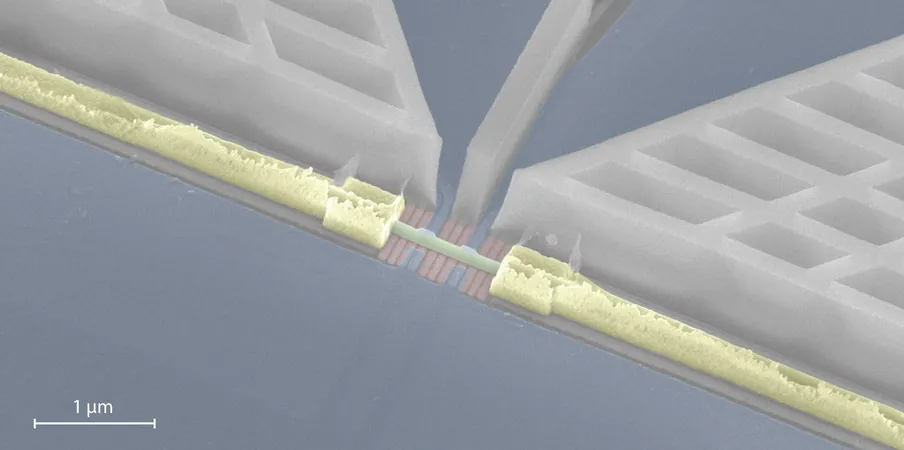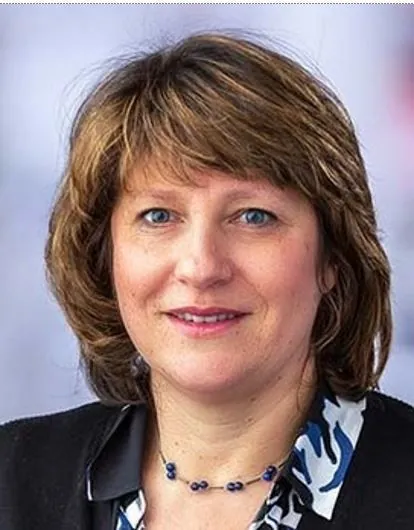
Breakthrough in Quantum Computing: Extended Kitaev Chains Enhance Majorana Zero Modes Stability
2025-03-31
Author: Wei Ling
Introduction
In a groundbreaking study, an international team of researchers from QuTech has successfully constructed a three-site Kitaev chain, using semiconducting quantum dots linked by superconducting segments within a hybrid InSb/Al nanowire. Their findings, recently published in *Nature Nanotechnology*, reveal that expanding the chain from two to three sites significantly boosts the stability of Majorana zero modes (MZMs).
Significance of Majorana Zero Modes
Majorana zero modes are unique quasiparticles predicted to exist at the edges of topological superconductors. Their non-Abelian exchange statistics makes MZMs particularly attractive for topological quantum computation, paving the way for robust quantum computing systems that are less susceptible to decoherence. This realization underlines the promise of topological superconductors in developing high-fidelity quantum gates.
The Kitaev Model
Research has shown that one-dimensional topological superconductors can be realized through the Kitaev model, which involves a chain of spinless fermions interlinked by p-wave superconductivity and electron hopping. Previous efforts led to the creation of a two-site Kitaev chain, yet researchers noted that this minimal structure allowed for MZMs that were not stable enough for practical applications, hence the nickname 'poor man's MZMs.' The instability was attributed to local noise and fluctuations in chemical potential.
Research Team and Findings
Leading the research, scientists such as Leo Kouwenhoven, Grzegorz Mazur, and first authors Alberto Bordin and Chun-Xiao Liu, embarked on the ambitious project to enhance the chain’s capabilities. By transitioning to a three-site configuration, they successfully observed that the stability of the zero-energy modes significantly improved. According to Mazur, 'We built on our previous work to confirm that our Majorana modes are indeed more stable in this setup. The findings suggest that scaling to larger chains could provide stable MZMs.'
Device Fabrication and Challenges
The researchers meticulously crafted their three-site Kitaev chain by connecting three semiconducting quantum dots through superconducting segments. The collaboration saw contributions from Erik Bakkers’ group at the Technical University of Eindhoven, enabling complex material synthesis that was crucial for the experiment.
Throughout the device fabrication process, which incorporated eleven gates, the team faced several challenges. After numerous iterations in a cleanroom environment, they successfully produced multiple functioning devices. Remarkably, all devices tested exhibited similar characteristics, showcasing the robustness of the three-site Kitaev chains against perturbations. Euphoria filled the lab when findings indicated that the final measurements from different devices yielded nearly identical results, confirming the reliability of their approach.
Future Research Directions
The future of this research is bright. The team is set to explore how these extended Kitaev chains can function as qubits in quantum information experiments. Mazur anticipates that with increased stability in three-site chains, they may offer improved performance in tuning qubits, thus lessening the adverse effects imposed by gate noise that plagued two-site setups.
With a view towards achieving true topological protection, Bordin envisions employing machine learning techniques to optimize the tuning of these Kitaev chains further. The ultimate goal is to scale up the chains, potentially leading to revolutionary advancements in quantum computing technology.
Conclusion
As Kouwenhoven affirms, 'We are making continuous progress. Exciting work on coupling three-site Kitaev chains with an additional quantum dot is already underway, promising further developments in the near future.' The landscape of quantum computation seems destined for transformation, driven by this innovative research on Majorana zero modes. Stay tuned for more updates!

 Brasil (PT)
Brasil (PT)
 Canada (EN)
Canada (EN)
 Chile (ES)
Chile (ES)
 Česko (CS)
Česko (CS)
 대한민국 (KO)
대한민국 (KO)
 España (ES)
España (ES)
 France (FR)
France (FR)
 Hong Kong (EN)
Hong Kong (EN)
 Italia (IT)
Italia (IT)
 日本 (JA)
日本 (JA)
 Magyarország (HU)
Magyarország (HU)
 Norge (NO)
Norge (NO)
 Polska (PL)
Polska (PL)
 Schweiz (DE)
Schweiz (DE)
 Singapore (EN)
Singapore (EN)
 Sverige (SV)
Sverige (SV)
 Suomi (FI)
Suomi (FI)
 Türkiye (TR)
Türkiye (TR)
 الإمارات العربية المتحدة (AR)
الإمارات العربية المتحدة (AR)